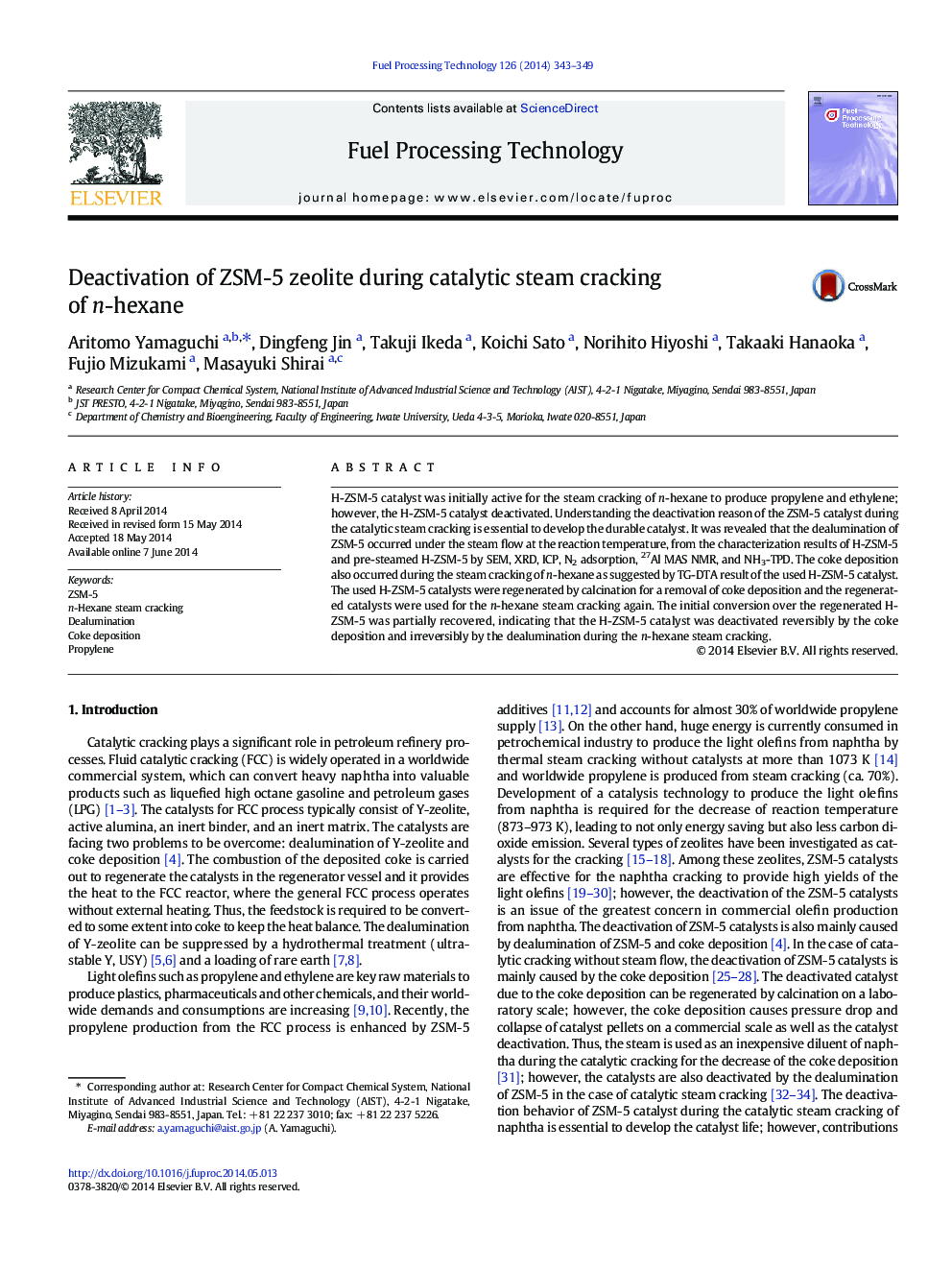| Article ID | Journal | Published Year | Pages | File Type |
|---|---|---|---|---|
| 209733 | Fuel Processing Technology | 2014 | 7 Pages |
•H-ZSM-5 catalyst was initially active for the steam cracking of n-hexane.•H-ZSM-5 catalyst was deactivated by dealumination of zeolite and carbon deposition.•Dealumination was the main reason of the deactivation during the steam cracking.
H-ZSM-5 catalyst was initially active for the steam cracking of n-hexane to produce propylene and ethylene; however, the H-ZSM-5 catalyst deactivated. Understanding the deactivation reason of the ZSM-5 catalyst during the catalytic steam cracking is essential to develop the durable catalyst. It was revealed that the dealumination of ZSM-5 occurred under the steam flow at the reaction temperature, from the characterization results of H-ZSM-5 and pre-steamed H-ZSM-5 by SEM, XRD, ICP, N2 adsorption, 27Al MAS NMR, and NH3-TPD. The coke deposition also occurred during the steam cracking of n-hexane as suggested by TG-DTA result of the used H-ZSM-5 catalyst. The used H-ZSM-5 catalysts were regenerated by calcination for a removal of coke deposition and the regenerated catalysts were used for the n-hexane steam cracking again. The initial conversion over the regenerated H-ZSM-5 was partially recovered, indicating that the H-ZSM-5 catalyst was deactivated reversibly by the coke deposition and irreversibly by the dealumination during the n-hexane steam cracking.
